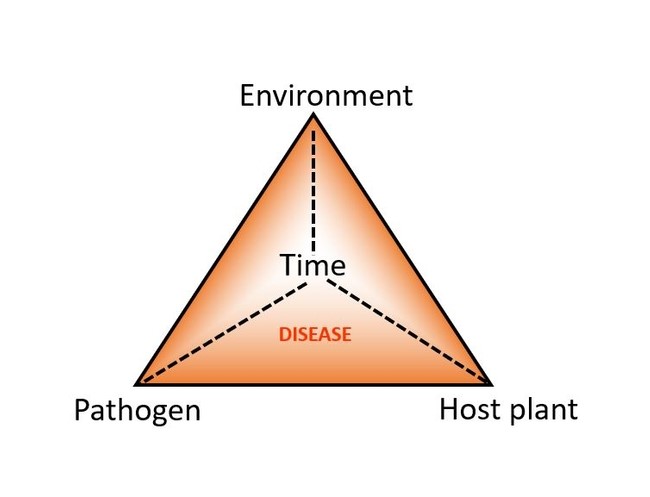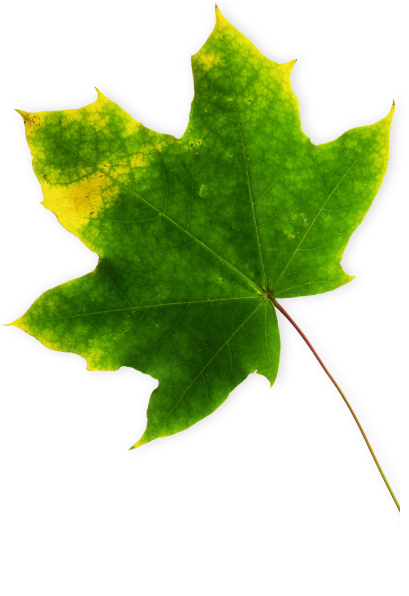Understanding how tree and shrub diseases occur will help you monitor your ornamental plants with a keen eye. Tree and shrub disease can be caused by either physical and environmental conditions (abiotic) or pathogens like fungi and bacteria (biotic). Trees and shrubs are not all affected by diseases in the same way and diseases can look different in different plant species. The environment plays an important role in both.
Abiotic Disease
Abiotic disease happens when trees and shrubs experience root problems or extremes in moisture, heat, light, soil pH, and nutrients. Symptoms are usually seen generally over the whole plant. Things like brown leaf margins, wilting, dieback, discoloration and sucker growth are common symptoms of abiotic disease. Trees, in particular, do not react to things like drought stress when it happens; they may show symptoms years later. Supplemental watering deeply and infrequently especially when we experience extended dry periods can greatly help.
Too much water can also cause problems if the soil does not drain well or if the irrigation comes on too often. Too much water will starve the roots of oxygen and basically drown. Some plants are more tolerant than others however to wet conditions. Often times inadequate space for roots to grow or girdling roots are to blame for abiotic disease.
Compaction or plants planted too close to each other or structures for their mature size, will limit the available soil volume along with water and nutrients. Girdling happens when water and nutrients cannot flow normally in the plant. Roots can become entangled and choke each other. Problems occur when wire baskets are not removed properly at planting or things are tied around the trunk for staking.
Even though abiotic diseases are not caused by a pathogen, they can still be treated in many cases. Identifying the underlying condition can lead to possible treatments such as soil testing, watering, mulching, fertilizer, aeration or pruning.
Biotic Disease
Trees and shrubs may also experience biotic diseases by either fungi, bacteria, nematodes or viruses. Trees and shrubs are most commonly affected by fungal diseases. Signs and symptoms, of fungal infection on leaves, usually show up as spots with a ring of discoloration at the margin, black specks or sometimes the filamentous mycelium. Infections in the twigs can cause excessive branching at the point of infection or branch dieback. Trunk cankers often ooze and cause discoloration.
Disease Triangle
 Pathogens require 4 important factors in order to infect. These factors are referred to as the disease pyramid and include the pathogen, a host plant, proper environmental conditions, and for a long enough time. All of these factors are required for a plant to become diseased. Interrupting even one part of this pyramid can prevent disease.
Pathogens require 4 important factors in order to infect. These factors are referred to as the disease pyramid and include the pathogen, a host plant, proper environmental conditions, and for a long enough time. All of these factors are required for a plant to become diseased. Interrupting even one part of this pyramid can prevent disease.
The more important diseases are fairly host specific and only infect closely related species. Planting disease-resistant varieties can help regarding host plant availability. Further putting that plant in the right place can aid in the environmental and time conditions. The environment fungi need to infect is mainly moisture. Excess moisture, particularly on the leaves, leads to potential infection. No one can control when and how much it rains naturally, but avoiding overhead irrigation and directing water only to the roots can help reduce infection by reducing leaf wetness.
All plants have their own requirements of sun exposer and space in order to thrive. Plants growing in full sun will dry faster than those in the shade and pruning to allow good airflow can help as well. The faster the plants dry, the less time fungi have to infect, breaking the disease cycle. Spores from pathogens can travel long distances and generally can’t be controlled at the individual landscape level, but good sanitation and cleanup of diseased plant material combined with preventative treatment with fungicides can reduce the amount of disease that can affect a plant.
Our certified arborists are trained to diagnose these problems and can recommend the right treatments to help correct the problems in your yard. You can read more about our Tree and Shrub services by clicking here.
Some common landscape diseases:
- Crabapple/Apple – apple scab, cedar apple rust, fire blight
- Flowering dogwood, sycamore – anthracnose
- Spruce and fir – needle cast
- Red and black pines – tip blight
- Rhododendrons – grey leaf blight
- Mountain laurel – leaf spot
- Beech – bleeding cankers, beech leaf disease
- Lilac – powdery mildew
- Rose – black spot
- Elm – Dutch elm disease
- Boxwood – blight and leaf spots
- Plumb – black knot
- Cherry – brown rot
For additional blogs about Plant Healthcare click here!
